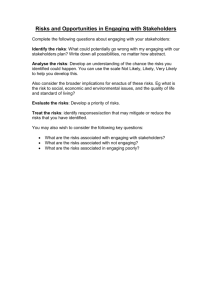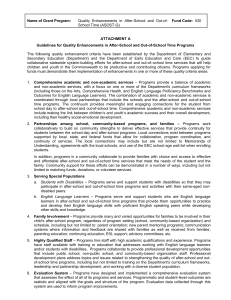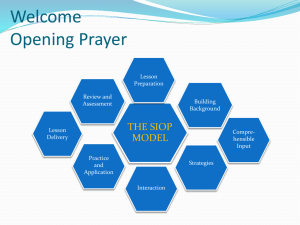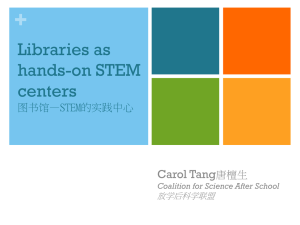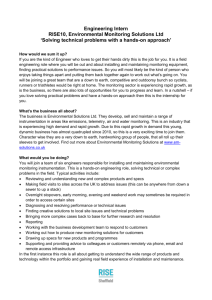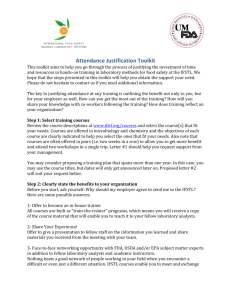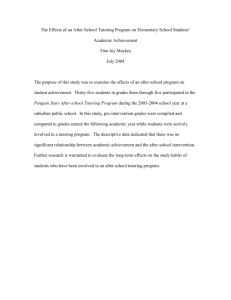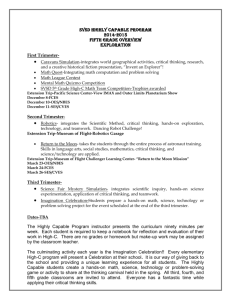Youth Competition Research - Out-of
advertisement
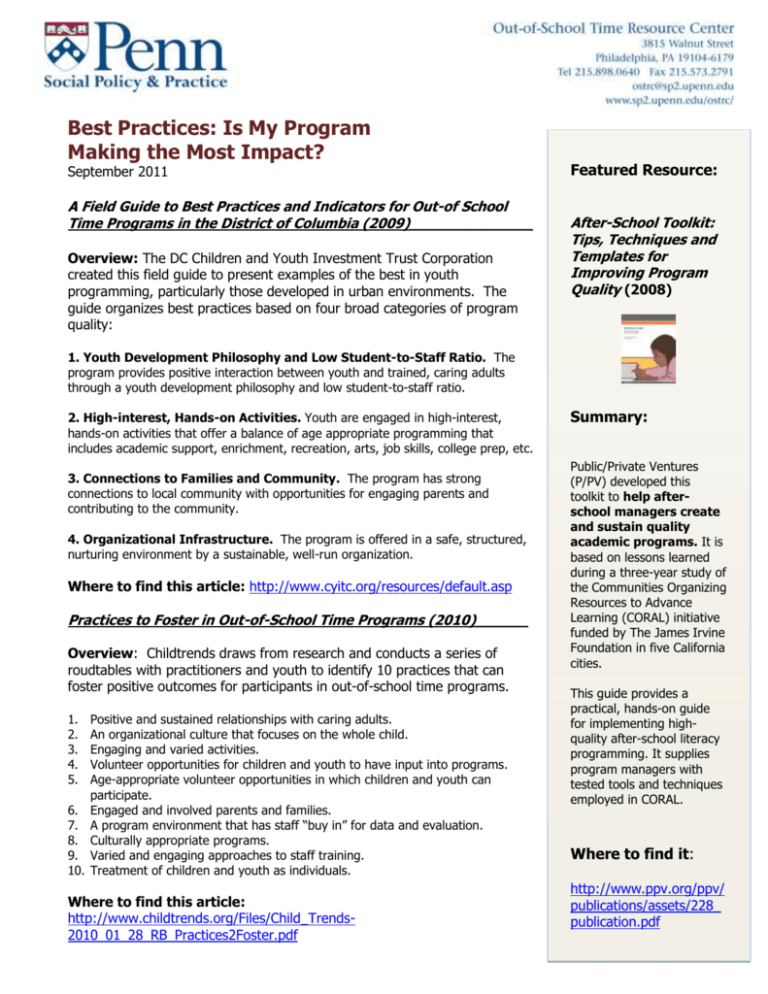
Best Practices: Is My Program Making the Most Impact? September 2011 A Field Guide to Best Practices and Indicators for Out-of School Time Programs in the District of Columbia (2009)______________ Overview: The DC Children and Youth Investment Trust Corporation created this field guide to present examples of the best in youth programming, particularly those developed in urban environments. The guide organizes best practices based on four broad categories of program quality: Featured Resource: After-School Toolkit: Tips, Techniques and Templates for Improving Program Quality (2008) 1. Youth Development Philosophy and Low Student-to-Staff Ratio. The program provides positive interaction between youth and trained, caring adults through a youth development philosophy and low student-to-staff ratio. 2. High-interest, Hands-on Activities. Youth are engaged in high-interest, hands-on activities that offer a balance of age appropriate programming that includes academic support, enrichment, recreation, arts, job skills, college prep, etc. 3. Connections to Families and Community. The program has strong connections to local community with opportunities for engaging parents and contributing to the community. 4. Organizational Infrastructure. The program is offered in a safe, structured, nurturing environment by a sustainable, well-run organization. Where to find this article: http://www.cyitc.org/resources/default.asp Practices to Foster in Out-of-School Time Programs (2010)______ Overview: Childtrends draws from research and conducts a series of roudtables with practitioners and youth to identify 10 practices that can foster positive outcomes for participants in out-of-school time programs. 1. 2. 3. 4. 5. 6. 7. 8. 9. 10. Positive and sustained relationships with caring adults. An organizational culture that focuses on the whole child. Engaging and varied activities. Volunteer opportunities for children and youth to have input into programs. Age-appropriate volunteer opportunities in which children and youth can participate. Engaged and involved parents and families. A program environment that has staff “buy in” for data and evaluation. Culturally appropriate programs. Varied and engaging approaches to staff training. Treatment of children and youth as individuals. Where to find this article: http://www.childtrends.org/Files/Child_Trends2010_01_28_RB_Practices2Foster.pdf Summary: Public/Private Ventures (P/PV) developed this toolkit to help afterschool managers create and sustain quality academic programs. It is based on lessons learned during a three-year study of the Communities Organizing Resources to Advance Learning (CORAL) initiative funded by The James Irvine Foundation in five California cities. This guide provides a practical, hands-on guide for implementing highquality after-school literacy programming. It supplies program managers with tested tools and techniques employed in CORAL. Where to find it: http://www.ppv.org/ppv/ publications/assets/228_ publication.pdf
